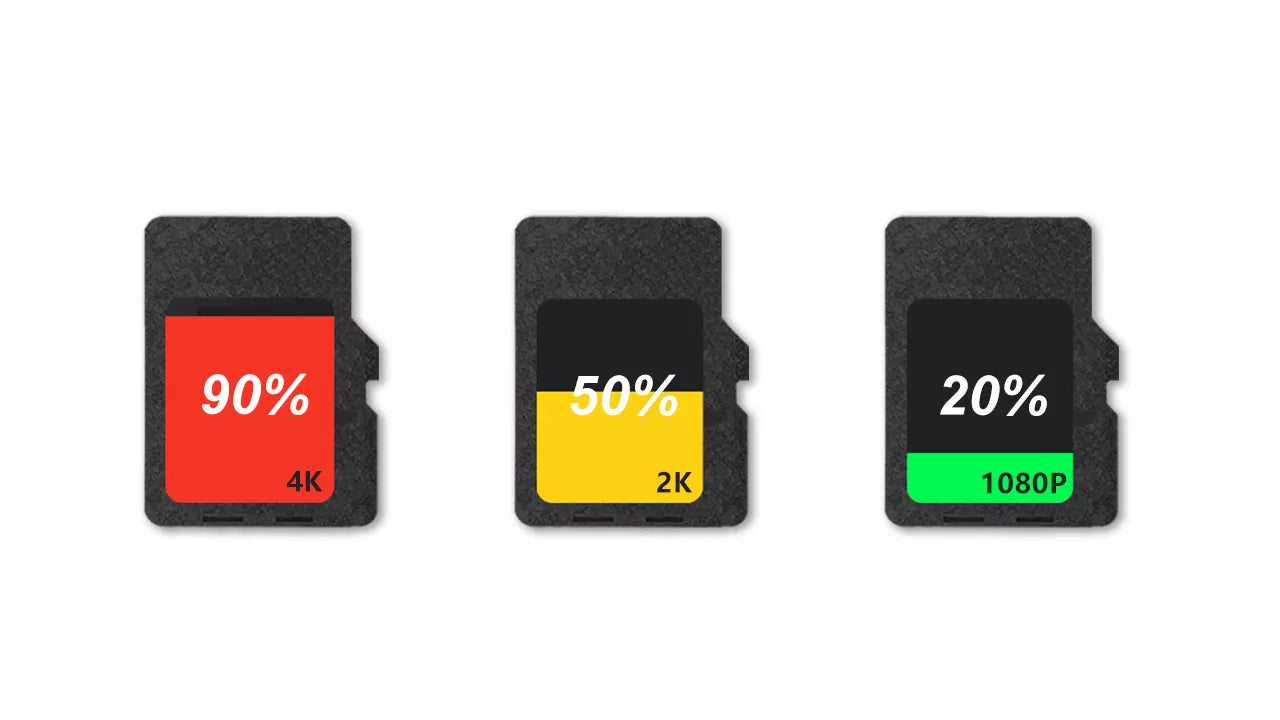Picking the right dash cam resolution isn’t just about "bigger numbers = better." 4K offers stunning clarity, but is it worth the extra cost and storage space? 2K strikes a balance, while 1080P remains the most practical choice for many drivers.
In this comparison, we break down:
- Image Quality – How much sharper is 4K really?
- Frame Rates – Does higher resolution mean smoother video?
- Storage Space – How often will you need to replace your SD card?
- Price – Is the upgrade worth it?
1. Image Quality: Is 4K Really That Much Better?
4K (3840×2160) – Ultra HD Clarity
✅ Pros:
- Captures fine details (license plates at 50+ feet)
- More natural colors and textures
- Best for professional use (evidence, vlogging)
❌ Cons:
- Requires a high-quality sensor to avoid noise
- Often struggles in low light
2K (2560×1440) – The Sweet Spot
✅ Pros:
- Noticeably sharper than 1080P
- Better low-light performance than many 4K cams
- Balanced file size
❌ Cons:
-
Not as detailed as true 4K
1080P (1920×1080) – The Practical Choice
✅ Pros:
- Still clear enough for most situations
- Small file sizes = longer recording times
- Most affordable option
❌ Cons:
- Less detail for distant objects
- Can look pixelated when zoomed in
Bottom Line:
- 4K = Best for detail, but needs good lighting
- 2K = Great balance of clarity and performance
- 1080P = Good enough for most drivers
2. Frame Rates: Smoothness Matters Too
| Resolution | Max Frame Rate (Typical) | Best For |
|---|---|---|
| 4K | 30fps | Crisp detail, but not super smooth |
| 2K | 60fps (on some models) | Smoother motion, better for fast action |
| 1080P | 60fps (common) | Best for capturing quick movements |
Key Takeaway:
- If you want smooth slow-motion, 1080P/60fps or 2K/60fps is better than 4K/30fps.
- 4K is great for static detail (like license plates) but not for fast-moving scenes.

3. Storage Space: How Much Footage Can You Keep?
| Resolution | Bitrate (Typical) | 128GB Card Recording Time |
|---|---|---|
| 4K | 30 Mbps | ~6 hours |
| 2K | 18 Mbps | ~12 hours |
| 1080P | 12 Mbps | ~24 hours |
What This Means:
- 4K fills your SD card 4x faster than 1080P
- If you want longer recording, 1080P is the most efficient
- 2K is a good middle ground
4. Price: Is the Upgrade Worth It?
| Resolution | Average Price Range | Best For |
|---|---|---|
| 4K | 300+ | Enthusiasts, professionals |
| 2K | 200 | Balanced performance |
| 1080P | 150 | Budget-friendly, everyday use |
Who Should Spend More?
- 4K = Worth it if you need maximum detail (e.g., highway driving, legal evidence)
- 2K = Best value for most drivers
- 1080P = Most cost-effective for casual use
Final Recommendation: Which One Should You Buy?
Choose 1080P If:
✔ You drive mostly in cities (shorter distances)
✔ You want long recording times without changing SD cards often
✔ You’re on a budget
Choose 2K If:
✔ You want better clarity than 1080P without huge files
✔ You drive in mixed conditions (city + highway)
✔ You want a good balance of price and performance
Choose 4K If:
✔ You need the best possible detail (e.g., commercial drivers)
✔ You don’t mind managing storage (larger SD cards, frequent backups)
✔ You’re willing to pay extra for premium quality
FAQ: Quick Answers to Common Questions
Q: Is 4K overkill for everyday driving?
A: For most drivers, yes. 2K or even 1080P is usually enough.
Q: Can I see license plates clearly in 1080P?
A: Yes, if you’re close enough (within ~30 feet). 4K helps at longer distances.
Q: Does 4K drain battery faster?
A: Yes, it requires more processing power, which can affect parking mode runtime.





